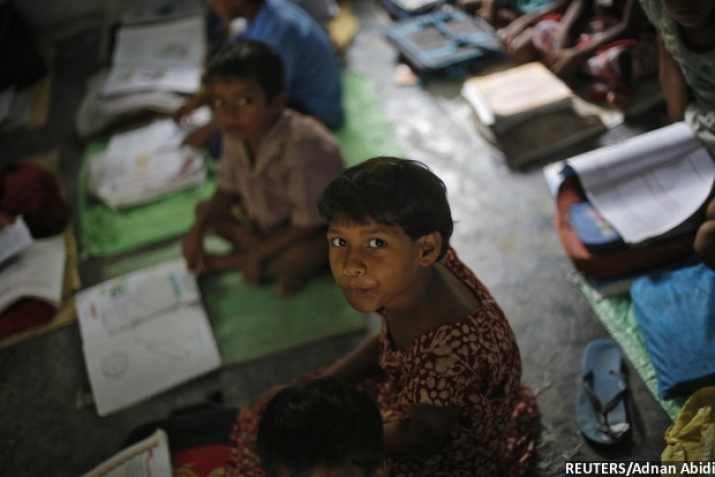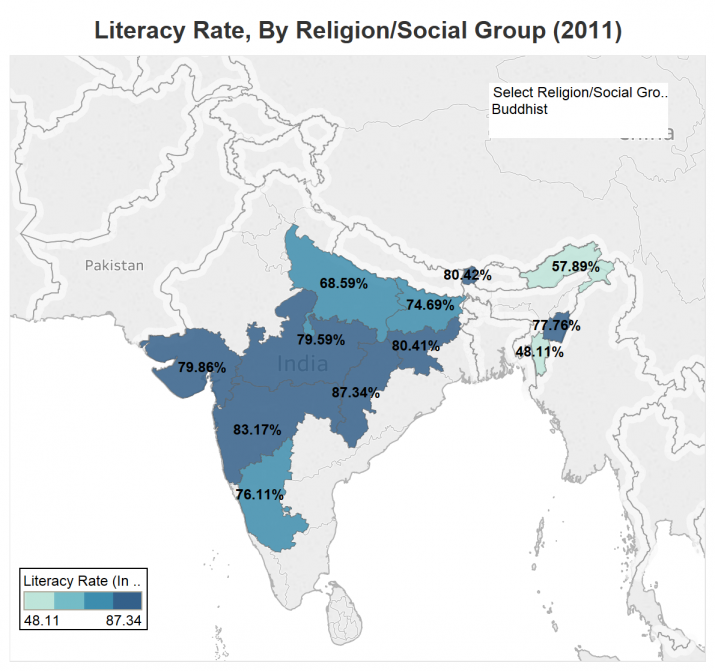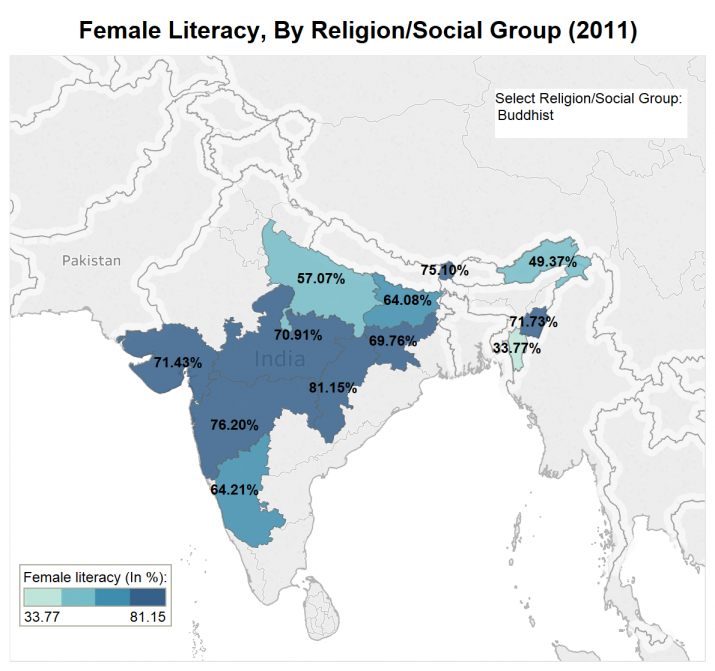NEWS
Data Shows Improved Literacy Rates, Gender Equality Among Buddhist Converts in India
 Buddhist converts in India enjoy better literacy rates, greater work participation, and more gender equality than “Scheduled Castes” of the Hindu community. From indiaspend.com
Buddhist converts in India enjoy better literacy rates, greater work participation, and more gender equality than “Scheduled Castes” of the Hindu community. From indiaspend.comAn analysis of 2011 census data by IndiaSpend, a data journalism initiative in India, indicates that Dalits who have converted to Buddhism to escape Hindu caste oppression experience positive changes in their living conditions and their basic needs. The analysis shows that the converted Buddhists, also called neo-Buddhists, enjoy better literacy rates, greater work participation and gender equality when compared to Hindu Dalits.
The word “Dalit,” meaning “oppressed or broken,” is the self-applied name for communities previously known as “untouchables” under India’s caste system. The Dalit Buddhist movement is a 19th and 20th century Buddhist revival that received its most substantial impetus from the Buddhist scholar and social reformer Dr. B. R. Ambedkar’s 1956 call for Dalits to convert to Buddhism as a means to escape the traditional caste-based society that marked the Dalit as people of the lowest social standing.
“Most Dalits at the senior levels of administration are Buddhists,” said Satpal Tanwar, a leader of the activist organization Bhim Army, which rose to prominance following caste violence in Saharanpur in Uttar Pradesh, earlier this year. “This is because Buddhism lends them self-confidence as compared to the caste system, which tends to rationalize their low social status through vague concepts like bad karma.” (IndiaSpend)
According to IndiaSpend, there are 8.4 million Buddhists in India, 87 per cent of whom have converted to Buddhism from other religions and are mostly Dalits. The remaining 13 per cent of Buddhists are from traditional Buddhist communities in India’s northeast and northern Himalayan areas. The analysis by IndiaSpend looks at Buddhists in India, and specifies that they assume that the advantages of developments in the Buddhist community can be mostly attributed to Dalit converts, who make up the bulk of the community.
As shown by census data, the literacy rate among Buddhists is 81.29 per cent, much higher than the national average of 72.98 per cent. This rate is also higher than that of Hindus (73.27 per cent), and Scheduled Castes (66.07 per cent).* Among Buddhists, only in traditional Buddhist communities in northeast, particularly in Mizoram (48.11 per cent) and Arunachal Pradesh (57.89 per cent), have a noticeably lower literacy rate. But in Chhattisgarh, Maharashtra, and Jharkhand, where the mass conversion movement has been strongest, the rates are 87.34 per cent, 83.17 per cent, and 80.41 per cent, respectively.
 From indiaspend.com
From indiaspend.com From indiaspend.com
From indiaspend.comThe literacy rate for female Buddhists is also higher than the total average, at 74.04 per cent, compared with a national average of 64.63 per cent. Among states populated by Buddhist converts, only in Uttar Pradesh (57.07 per cent) and Karnataka (64.21 per cent) is the female literacy lower than the national average, but Scheduled Castes in those regions have an even lower female literacy rate. In addition, the ratio of men to women is slightly more equal in the Buddhist population (965 women for every 1,000 men), when compared with Scheduled Castes (945 to 1,000) and the national average (943 to 1,000).
It is not easy to conclude, however, whether Buddhist converts have greater access to education than Dalits, whether they are more prone to pursue education, or whether it is educated Dalits who are converting to Buddhism.
Differences have also been noted on other parameters: IndiaSpend observed that some 43 per cent of Buddhists live in cities, while only 31 per cent of all Indians live in urban areas. In addition, education and improved social status through education have also led to higher work participation: 43.15 per cent, while Schedules Castes and the national average are 40. 87 per cent and 39.79 per cent, respectively. Buddhist converts now contribute more to the Indian national economy than Scheduled Castes.
“Lack of farm land or traditional occupation made it easy for Mahars** to take to education as the means for gainful employment,” said Nitin Tagade, assistant professor at Savitribai Phule Pune University, who has studied the economic condition of Buddhist converts in Maharashtra. “So they had a head start as compared to other communities in attaining education and moving to cities.” (IndiaSpend)
The changes in the lives of Buddhist converts can be credited to Dr. B. R. Ambedkar, whose example has inspired thousands of Dalits to convert to Buddhism since 1956. The changes noted above, such as increases in education and economic participation, seem to have given the Buddhist community a new self-confidence.
* The official name given in India to the lowest caste, considered “untouchable” in orthodox Hindu scriptures and practice, officially regarded as socially disadvantaged.
** Mahar is an Indian community found largely in Maharashtra. Most momebrrs of the community converted to Buddhism in 1956, following the lead of Dr. Ambedkar.
See More
Conversion To Buddhism Has Brought Literacy, Gender Equality And Well-Being To Dalits (IndiaSpend)
Converted Buddhists enjoy better literacy, gender equality than SC Hindus (Business Standard)
Related News from Buddhistdoor Global
90-year-old Buddhist Monk recalls “Babasaheb” Ambedkar’s Conversion to Buddhism
India’s Dalits Embrace Buddhism on Vijaya Dasami
India and Sri Lanka Commemorate the Life and Work of Dr. B. R. Ambedkar
India’s PM Modi Uses Buddhist Monks to Woo Dalit Voters in Uttar Pradesh
Related Features from Buddhistdoor Global
Living Dr. Ambedkar’s Vision
Dalit conversions to Buddhism must not be due to hatred of mainstream Indian society














